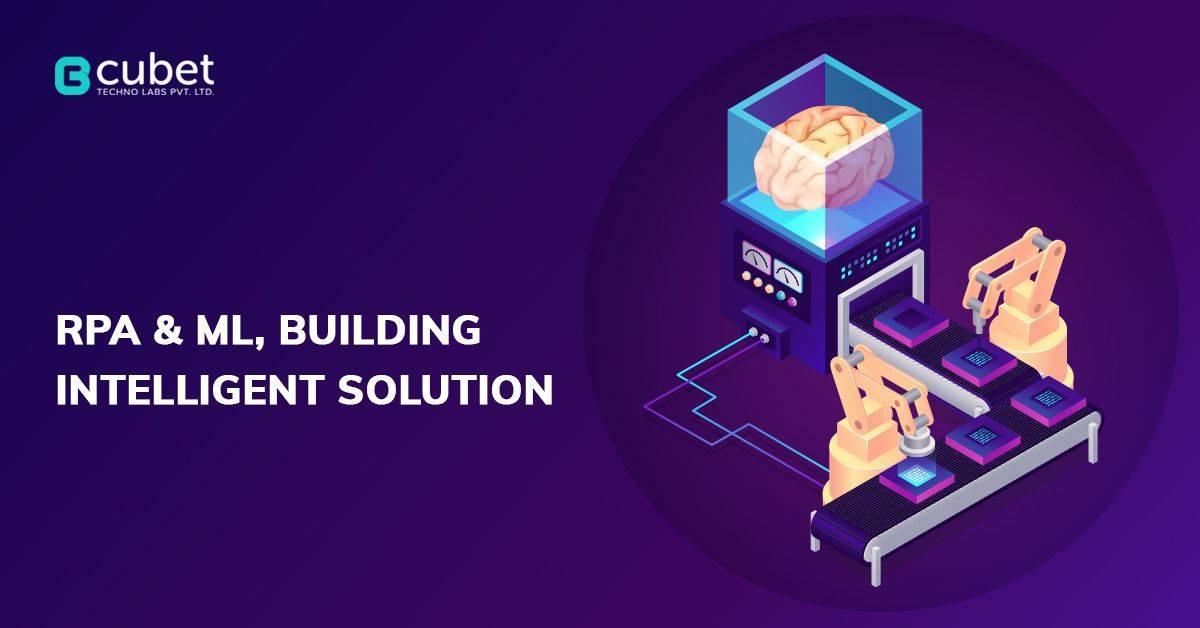How to use ML and RPA for building intelligent solutions?

The modern business is characterized by its extensive use of digital technology and its ever-increasing reliance on automation of repetitive processes and tasks. From paper to spreadsheets to smart applications, the business world has embraced digital transformation and is in a race to create clever, effective and disruptive ways of leveraging technology. The crux of this transformation is the adaption and use of automation to handle recurring tasks with minimum cost, greater efficiency, and improved compliance.
Two terms that stand out are ML short for Machine Learning and RPA for Robotic Process Automation. While they are independent in their concept and design, they are used in tandem for creating an Intelligent Automation Solution (IAS).
RPA or Robotic Process Automation is the technology that is used to emulate human interactions as series of steps that are part of any business process while ML or Machine Learning to infuse the system with the ability to analyze and learn from data (structured and unstructured) without any human intervention and explicit programming.
RPA enables businesses to automate workflow, back-office processes, and other highly manual activity by having the software bots interact with system applications, websites, user portals, etc. However, RPA is algorithm-driven and lacks cognitive intelligence. ML does the thinking while RPA does the execution. ML solves this problem by synthesizing information from a large volume of data, understanding patterns, and using ML models to derive useful insights. This intelligence is then given to the RPA which can now distinguish attributes and understand relation and logic to perform repetitive tasks better.
AI-backed ML can read, listen, and analyze data using Information extraction, image recognition, and speech recognition. When an RPA bot is infused with this ‘intelligence’, it can process, analyze, compare, and structure data in order to draw conclusions and make smart decisions based on it. This is not only useful for intelligent automation of highly manual tasks like invoice processing, form processing, interview review, medical prescription analysis, etc. but also the automation of higher-order tasks that previously relied on the perception and judgement of humans. For using a combo of Machine Learning and RPA effectively, a sound design strategy based on system architecture knowledge, insights into functional details, process, sub-system interfaces, interconnect logic, etc. is vital.
For example, in the automation of accounts payable, the RPA bot will first access the accountant’s inbox and identify emails related to invoices, then it sends the particular attachment to an intelligent ML application where the document is processed, and details are obtained. This extracted data is sent back to the RPA bot which then creates the supplier invoice in the system and allows for monitoring by the employee. This saves time and effort and makes the entire process free from human error. The integration of ML and RPA is a two-way improvement strategy. When robots are programmed to store and filter useful data, ML uses this data to train its forecasting models continuously and this then is fed back to the RPA bots for more accurate execution of its processes thereby creating an Automation Continuum for a robust Intelligence Automation System.